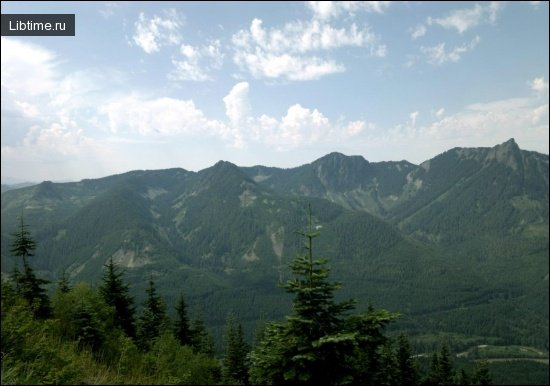How to navigate through moss and anthills
There is a large boulder in the forest, covered on one side with fluffy moss. Look carefully at this unusual compass, which was created by nature itself. We have already written about different signs of orienteering, orienteering in the forest and with the help of a compass. We advise you to read these interesting articles. 
Orienteering by moss and lichen
Mosses and lichens do not like heat and light, so they grow in the shady side. So where the mosses and lichens are, that's north; on the south side there is less or no moss. Now orienting by moss will not give you any difficulties. 
But to determine where north and south are, you need to check the moisture content of the moss, not the soil. 
Orienteering by ant hill
Another natural compass, which will always help you find the right direction in the forest,- ant hills.
Most of them are located on the south side of a tree, stump or shrub, as ants are heat-loving insects. The southern side of the anthill is usually sloping, the northern side is much steeper.
Orientation on the anthill is quite simple to memorize and understand. In the tundra, as well as in boram-white-moss forests, (more: What types of forests) and taiga bogs in the north of the European part of the USSR, in Western and Eastern Siberia, in the Far East grow lichens (jagel, or deer moss) of the genus Cladonia, which serve as irreplaceable fodder for reindeer, especially in winter.
Sources of valuable antibiotics and enzymes, they can also serve as a compass. Darker than the whole lichen, the tips of their branching bushes always face north. Therefore, going to the north, you see a dark, moss (lichen) surface, when moving in the opposite direction, that is, to the south, the dark coloring is not visible, and the bushes seem lighter in color
Forest "lights" and "beacons"
In order not to get lost in the forest, it is necessary to choose well visible landmarks in advance, which help to determine the location, direction of movement and measure the distance to the intended points on the way. Writer A. Avdeenko in the book "Above the Tisza" so tells about his hero Kablukov:
"The thick fog did not prevent Kablukov from orienting himself. By the signs, there and here scattered along the sentinel path, he easily determined where he was. Here was the stony bed of a groove washed by spring rains, which meant that he had already traveled more than a third of the way. In fifty paces there should be a stump of an old oak tree. Yes, there it is, there it is. In seven minutes the bare trunk of an oak tree, broken by lightning, will blacken through the fog, then, on the other, on the right flank, there will be a big boulder deeply embedded in the ground.
There are peculiar, unusual landmarks - "bulbs" - in the forest areas affected by opencom. You walk in the silence of the forest at night, and suddenly, in the impenetrable darkness, bright lights of phosphoric light flash: the growing ends of rhizomorphs of opencas glow. 
The fungus of openok, covered with a dense shell, strongly branched under the bark of trees, especially weak trees, penetrates its branches into the living wood, sucks the juices out of it and destroys the tree. The ends of the fungus (rhizomorphs), protruding outward, glow like bright miniature electric bulbs.
In the summer night on a winding taiga trail, forest "beacons" can show the way. These are rotted stumps glowing with phosphoric fire. The brightest phosphoresce rotten stumps. Shivering luminous streams "flow" down them from top to bottom. Myriads of bacteria nest here.
Bioluminescent microbes contain complex chemicals called luciferin and luciferase. Different bacteria have their own fluorescents, differing in luminescence strength and color. Quite a few superstitions have been spawned by these lights. But the nighttime cold light is explained simply. This is bioluminescence, that is, a living glow, especially active in windy weather, with plenty of oxygen and moisture. 


